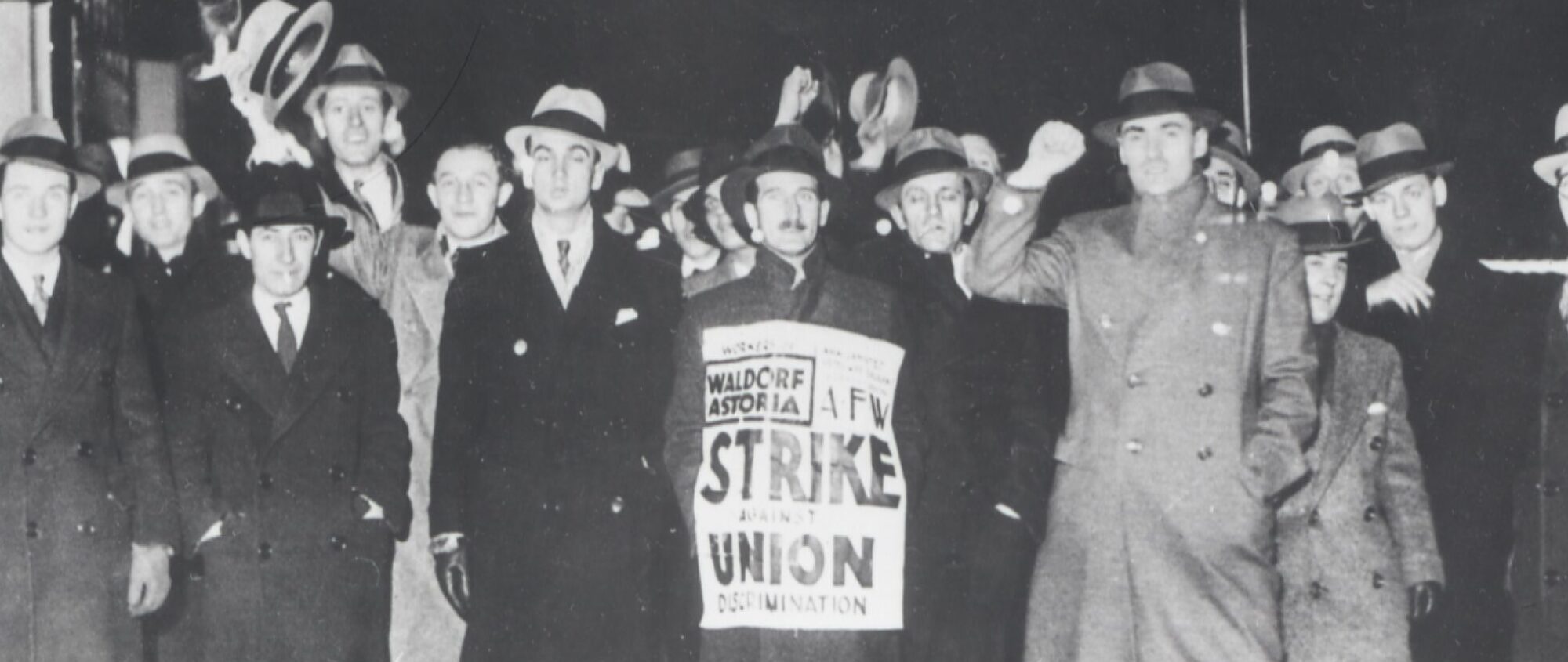When does free speech stop being free? At the entranceway of one’s job, apparently.
That was the implication of a ruling this month from the Eighth Circuit Court, which found that the sandwich conglomerate Jimmy John’s was within its rights to fire six employees for making signs that protested the company’s policy of forcing workers to come to work when ill.
While the decision came as a surprise to many, the logic underlying it—that employees have few, if any, free speech protections on the job—has had devastating impacts on American workers for decades. Indeed, the dramatic drop in union representation is due in part to the fact that our court system regulates employees’ ability to organize by the impact of their organizing on businesses’ bottom line, devoid of any concern for the free speech or civil rights of workers.
Until we ensure that freedom of speech extends to the workplace, workers and the labor movement writ large will continue to suffer defeats at the hands of courts, corporations and legislatures. In short, we need a 21st-century Bill of Rights for Labor.
It’s no secret that laws meant to protect workers’ rights have been under assault for decades, in spite of greater protections and progress for workers in many areas. Unions are hampered by rules that would never be applied to corporations, or to any other form of political activism. Underlying this assault is the decision by the framers of the 1935 National Labor Relations Act (NLRA) to ground the Act’s constitutionality in the Commerce Clause, not the Bill of Rights or the Reconstruction amendments.
Just consider how unions get formed. To determine whether employees at a workplace have a legal right to form a union and bargain collectively, the National Labor Relations Board conducts an election to determine whether the workers “want” to form a union. The rules that govern this election, as set forth by Congress and, subsequently, the courts, are that only one side—the party that advocates a “no” vote—can force employees to attend mandatory presentations of their arguments as a condition of employment.
Employers use half of all of these “captive audience” meetings to threaten wage and benefit cuts should they vote to go union, according to researchers at Cornell. In two-thirds of these instances, bosses threaten to go out of business entirely; in one in ten cases, employers actually hire goons to impersonate federal agents and intentionally mislead workers about their rights and collective bargaining. It’s no wonder that anti-union consultants consider exploiting this imbalance of speech to be “management’s most important weapon in a campaign.”
Unions, for their part, have tried to fix this problem legislatively, perhaps most notably through the Employee Free Choice Act a decade ago. That attempt, however, which would have allowed workers to sidestep elections entirely by simply requiring a majority of workers to sign union-affiliation cards, was greeted by a multimillion dollar right-wing assault that extolled the “sanctity of the secret ballot.” The bill, not surprisingly, did not pass.
Given that attempts to reform labor law for the benefit of labor itself have largely failed since the 1935 NLRA passage, unions and their allies need a new strategy. That starts with changing the frame of the debate—returning to rights-based legal strategies and challenging the unequal restrictions on free speech for what they are: unconstitutional.
The rights of working people to unite, protest, boycott unfair businesses, and demand change in all areas of business are fundamentally rooted in the Bill of Rights and the Reconstruction amendments. Where labor law restricts these rights, either through statute or judicial fiat, it should be resisted and challenged as such.
Given that attempts to reform labor law for the benefit of labor itself have largely failed since the 1935 NLRA passage, unions and their allies need a new strategy. That starts with changing the frame of the debate—returning to rights-based legal strategies and challenging the unequal restrictions on free speech for what they are: unconstitutional.
The rights of working people to unite, protest, boycott unfair businesses, and demand change in all areas of business are fundamentally rooted in the Bill of Rights and the Reconstruction amendments. Where labor law restricts these rights, either through statute or judicial fiat, it should be resisted and challenged as such.
Affirming free speech rights won’t just help workers or unions; it will benefit all Americans. The decline of union participation has resulted in stunning income inequality, wage stagnation, and widespread gaps in basic health, retirement, and family leave benefits, among other perverse outcomes. Stronger worker protections and a more robust labor movement is one sure-fire way to create a more prosperous and inclusive economy.
When the government can dictate to workers what they can or cannot write on a flyer, a picket sign or a tweet; where and when they can march; even what they may demand at the bargaining table, something has gone very wrong. We don’t just shift power to large corporations at the expense of struggling families; we violate a bedrock ideal of this country.
Unions have been on the defensive for so long it can be easy to accept the rigged rules of the system as a given, as immune to change—but they are not. They remain bound by the Constitution, like all else. It’s time to make sure that’s the case in practice.
[This article originally appeared at The American Prospect.]
